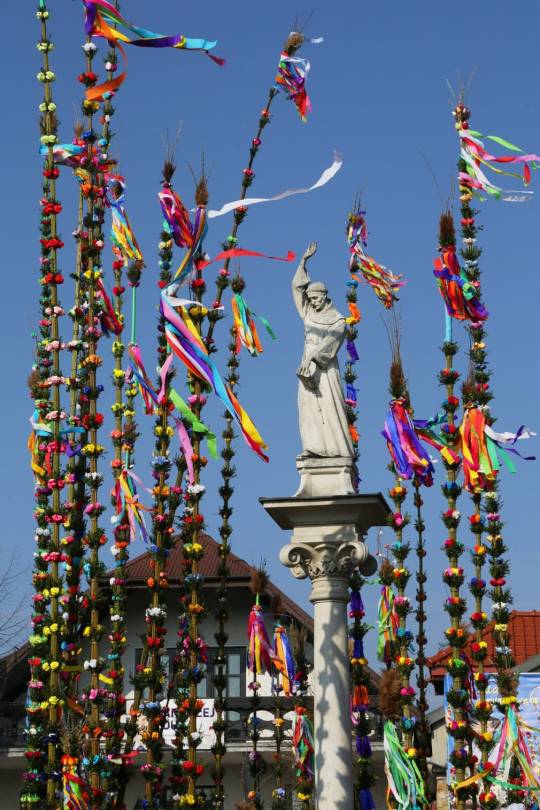Content includes cultures, religions, & philosophies from around the world. Captions, photos, etc are not mine unless otherwise stated. -Frequent updates.- ~BA in Religious Studies~ ~MA~
Don't wanna be here? Send us removal request.
Video
youtube
What is Vaisakhi? An Overview | Basics of Sikhi
Every year, Sikhs come together to celebrate Vaisakhi, but what is Vaisakhi? Why is it such an essential part of Sikhi (Sikhism)?
During the month of Vaisakh (mid-April to mid-May), Guru Gobind Singh Ji (the tenth Sikh Guru) summoned Sikhs far and wide to the city of Anandpur Sahib, India.
Once the Sikhs gathered, Guru Ji presented Themselves on a platform. In a test of faith, Guru Ji raised their sword and asked who was willing to give their head! In time, five Sikhs stood, and each presented themselves to the Guru, offering themselves as a sacrifice. In turn, Guru Gobind Singh Ji blessed them with Amrit (ambrosial nectar) and initiated them into the Khalsa. These five were hereafter known as the Panj Pyare (the Five Beloved Ones).
Since this day in 1699, millions of Sikhs worldwide have been blessed with Amrit, becoming initiated into the Khalsa (Army of the Immaculate), adhering to stand up against injustice and provide the basic needs to people from all walks of life.
20 notes
·
View notes
Photo

People visit the illuminated Golden Temple, the holiest Sikh shrine on the occasion of Vaisakhi, the Sikh New Year, in Amritsar, India, Tuesday, April 14, 2009. (AP Photo/Altaf Qadri)
40 notes
·
View notes
Photo

Sikh men performing the bhangra dance on the occasion of the Baisakhi festival.
Photo by Nitin Kanotra/Hindustan Times via Getty Images
23 notes
·
View notes
Photo




Sikhs celebrating Vaisakhi at a temple in Kabul, Afghanistan.
Photographs by Hindustan Times.
2K notes
·
View notes
Text

April 2025: Glasgow, Scotland Sikhs take part in the annual procession as part of the Vaisakhi celebration to celebrate the birth of the Sikh nation Photograph: Jeff J Mitchell/Getty Image
11 notes
·
View notes
Photo

Sikh devotees pay obeisance with folded hands, facing the Golden Temple, the holiest of Sikh shrines on the eve of the Baisakhi festival in Amritsar, 13 April, 2010.
Photograph: Raminder Pal Singh/EPA
30 notes
·
View notes
Text

April 2023: Amritsar, India Sikh pilgrims wait for a bus to Pakistan during the Baisakhi spring harvest festival.
Photograph: Narinder Nanu/AFP/Getty Images
17 notes
·
View notes
Photo

Girls light hold special prayers with lamps at a historical temple in Akhnoor during the Baisakhi festival. 2010.
Photograph: Channi Anand/AP
99 notes
·
View notes
Photo

A child pours holy water taken from the sacred pond at the Golden Temple, the holiest of Sikh shrines during the Baisakhi festival in Amritsar, India. 2010.
Photograph: Raminder Pal Singh/EPA
41 notes
·
View notes
Photo

Women and men huddle together in a bid to get ‘holy’ drinking water from a fountain in Hassan Abdal, Pakistan, presumably discovered by Guru Nanak himself. Photo by Naveed Ahmad
37 notes
·
View notes
Text

2015: Quezon, Philippines With their best dresses on, girls join the Palm Sunday rites outside the Holy Family parish church
Photograph: Aaron Favila/AP
31 notes
·
View notes
Text

Haiti: A little girl stands beside decorative palm fronds during Palm Sunday. (Hector Retamal/Getty Images)
33 notes
·
View notes
Text

2015: Cali, Valle del Cauca, Colombia A woman participates in a mass held as part of the Palm Sunday celebrations
Photograph: Luis Robayo/AFP/Getty Images
27 notes
·
View notes
Photo

A man holds palm fronds during Palm Sunday Mass in Port-au-Prince, Haiti, on April 14, 2019. Palm Sunday marks Jesus Christ’s entrance into Jerusalem, when his followers laid palm branches in his path, prior to his crucifixion. (AP Photo/Dieu Nalio Chery)
28 notes
·
View notes
Photo

April 16, 2022: A child standing among priests outside the Patriarchal Cathedral after an Orthodox Palm Sunday pilgrimage in Bucharest, Romania. Thousands joined the pilgrimage, which has been affected by COVID-19 pandemic restrictions in the previous two years.
(AP Photo/Vadim Ghirda)
45 notes
·
View notes
Text

2017: Tokarnia, Poland Catholic believers take part in a Palm Sunday procession
Photograph: Jacek Bednarczyk/EPA
19 notes
·
View notes
Text

2015: Lipnica Murowana, Poland An Easter Palm Contest to find the tallest constructed palms on Palm Sunday at the market square
Photograph: Beata Zawrzel/Beata Zawrzel/Demotix/Corbis
74 notes
·
View notes